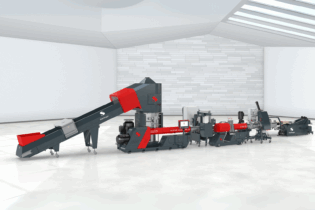Compliance and enforcement are the biggest challenges facing the medical waste/health-care risk waste industry, Stan Jewaskiewitz, past president of IWMSA, tells Chantelle Mattheus.
Fundamentally, the medical waste (health-care risk waste – HCRW) market can be split into two sectors, i.e. public (provincial hospitals, clinics, etc.) and private (private hospitals and clinics, including doctors’ surgeries, etc.). “The removal, transport and treatment including disposal of HCRW is normally carried out by private sector service providers (contractors). All HCRW in the government sector is normally removed or handled via tenders that are put out by the relevant institutions or provincial health departments. The private sector HCRW is also handled via tenders or quotes requested by the relevant institution (hospital, clinic, etc.),” explains Jewaskiewitz. Additionally, there are a number of laws and by-laws that apply, such as the provincial legislation and regulations that govern the handling of HCRW and the industry standard – SANS 10248. The Department of Environment Affairs (DEA) has been and still is in the process of developing norms and standards in accordance with the National Environment Management: Waste Act No.59 of 2008. Draft Health Care Risk Waste Management Regulations, in terms of the Waste Act, were also gazetted by DEA in June 2012. “It is estimated that there is about 45 000 t of HCRW generated annually in South Africa. There is a perception that there is insufficient capacity to treat the amount of HCRW produced and this results in illegal storage and dumping,” states Jewaskiewitz, adding that a number of cases of illegal dumping have been reported in the media over the last five years or so. “There are still some major cases of illegal dumping being prosecuted by the authorities going back some four to five years. Tender irregularities and fraud are also regularly being cited as the cause for many of the problems and challenges facing the HCRW industry.” Current challenges According to Jewaskiewitz, there are a number of challenges facing the industry, with the biggest including training, segregation of wastes, transport, disposal and treatment and storage. When referring to training, Jewaskiewitz indicates that this is specifically for waste generators (hospitals, clinics and doctors), transporters and disposal/treatment. “This includes training on the lack of proper procedures, compliance issues, as well as verification of qualified and experienced service providers.” When it comes to segregation of waste, Jewaskiewitz says approximately 5 to 10% is actually hazardous or infectious – approximately 45 000 tpais generated of which only 2 500 to 4 500 tis hazardous. The separation at source of general waste and HCRW is therefore critical as the mixing of wastes in hospitals and clinics give rise to larger volumes of waste requiring treatment. “Once mixed, all the waste is treated as hazardous, including general waste.” This has a knock-on effect when dealing with the disposal and/or treatment of HCRW. “There is still significant overloading of existing facilities due to the “mixing” of wastes,” warns Jewaskiewitz. In addition, when investigating the storage of HCRW, challenges include the use of inadequate facilities that are not compliant with current regulations. “Storage periods are also a problem, especially for small quantities and rural locations.” The challenge with regards to transport is quite simple –appropriate, purpose-built vehicles with the necessary licences are required. According to Jewaskiewitz, this has resulted in the industry being fuelled with speculation and allegations of impropriety relating to, among others:- tender abuse–- “tenderpreneurs” manipulating tenders
- compliance issues – license/permit conditions
- court cases – between service providers and with government departments.
- National Environmental Management: Waste Act No.59 of 2008
- Norms and Standards for Storage of Wastes (draft)
- Western Cape – draft regulations 2011 (Health Care Waste Management Act, 2007)
- Gauteng (GDARD) regulations
- KZN HCRW Policy
- Department of Environment Affairs (DEA) – draft regulations 1/06/2012
- SANS 10248-1: 2008 Management of HCW Ed.1
- SANS 10248-2: 2009 Management of HCW Ed.1 (rural and remote settings)







